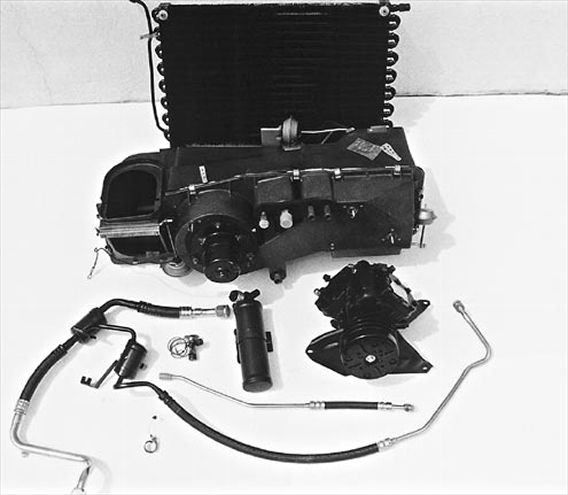

In the past two stories, we’ve shown you how to restore your Mopar’s air conditioning system with help from Classic Auto Air in Tampa, Florida. The first installment detailed their restoration process for both hard and soft lines, and the filter/dryer assembly. Last month, we walked you through the restoration of the plenum box, showing that it’s a job the average enthusiast can tackle at home and get concours results. This time we’re going to follow along as Classic Auto Air restores a Mopar A/C compressor.
What’s especially interesting about this particular compressor is that it was known to be a good compressor, meaning that when it was pulled off of the donor car a few years ago, it worked. However, after tearing it down for the restoration, we discovered that although it may have worked a few years ago, it wouldn’t do the job now. There were three main factors that led us to this conclusion, the first being that there was almost no oil at all in the compressor. The compressor is originally filled with 10 to 11 ounces of oil when it is installed. Between three and five ounces of oil will travel throughout the system and remain in the various hoses and components, leaving between six to eight ounces of oil in the compressor when it is disassembled.
When we drained our compressor, there was less than an ounce of oil. We then discovered that the reed valves and valve plate assemblies in the heads had a light coat of surface rust on them. This was because the oil that routinely coats these parts had dispersed. Sometimes the valve plate assemblies can be reused when they are cleaned of surface rust. Sometimes the reed valves are too pitted to get a good seal. Ours were borderline, so that was two strikes against our compressor. Classic Auto Air recommends running your car’s A/C compressor at least once a month for a few minutes to ensure that all internal components get a fresh coating of oil, even in the winter when your car is in storage.
The final strike against our compressor was that a couple of the reed valves themselves were bent and would not close tightly to form a good seal. As a result, the compressor wouldn’t be able to do an efficient job. Unfortunately, the reed valves are not able to be repaired—once bent, the whole valve plate needs to be replaced. The cause of a reed valve not seating properly can be either from being tweaked by a previous service repair and a careless technician, or more likely, impatience while recharging the system. It’s vitally important that when charging an A/C system with fresh refrigerant, the canister of refrigerant is in an upright position, not laying on its side. In an upright position, only the gasses at the top of the refrigerant container are siphoned off and introduced into the A/C system. If the can is tipped on its side, liquid refrigerant is poured into the system, rather than the gas.
Gases can be compressed, which is where the reed valve comes in—it seals the incoming charge during the compression cycle when the system is running. It’s impossible to compress a liquid, so if you run liquid refrigerant through your system while it is being recharged, when the liquid reaches the reed valve, it forces its way past, bending the valve. Impatient service technicians will often tip the can of refrigerant onto its side to fill the A/C system quicker.
In addition to the maladies listed, we had one more problem with our A/C system—the clutch. While the clutch mechanism’s field coil worked as it should, the clutch material was shot and showed obvious signs of slippage, and was on its way to total failure—it would have either not turned the compressor on at all because it was slipping, or it would have seized as it wore further. Other brands of compressor clutches (Ford, GM, Sanden) can be resurfaced, but Mopar compressor clutches cannot, so a new clutch had to be located. As long as the friction surfaces are not too badly worn, the clutch can be rebuilt.
Fortunately, Classic Auto Air has shelves full of replacement Mopar clutches. Classic Auto Air can rebuild your complete compressor, including new pistons and cranks, and they can replace or rebuild all the bearings in the system. They can also provide you with any parts you need to do the job yourself. However, one part requiring specialized tools is the bearing in the compressor hub. The Chrysler shop manual states that the bearing must be replaced every time the magnetic clutch assembly is disassembled. It requires a special arbor attachment to press it out of the hub. Classic has this tool, but your local machine shop probably won’t. If your hub assembly needs to be serviced, we recommend sending it to Classic Auto Air to let them do it, or find a good used one. We followed along as Classic’s Curtis Clark rebuilt our compressor.